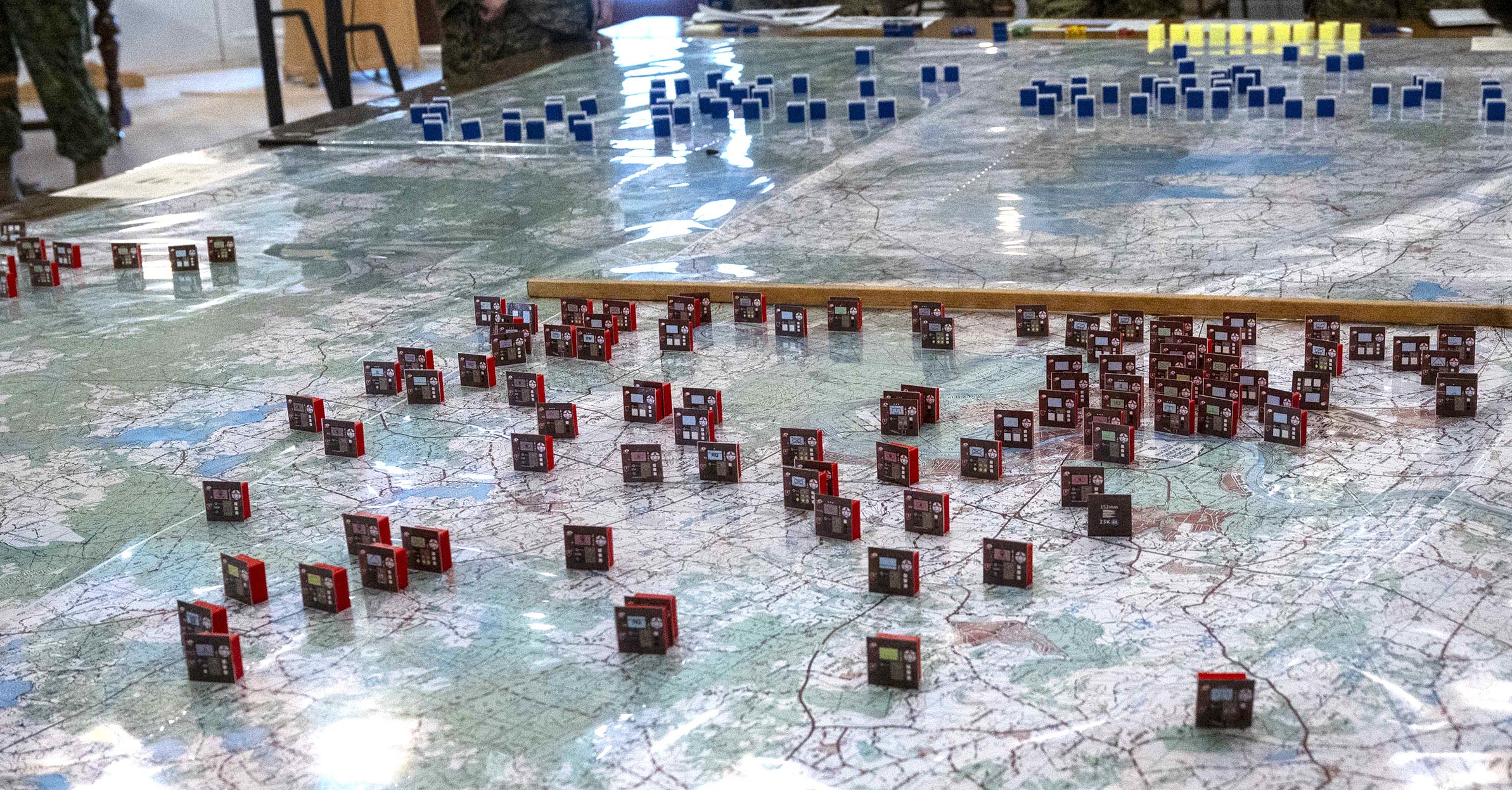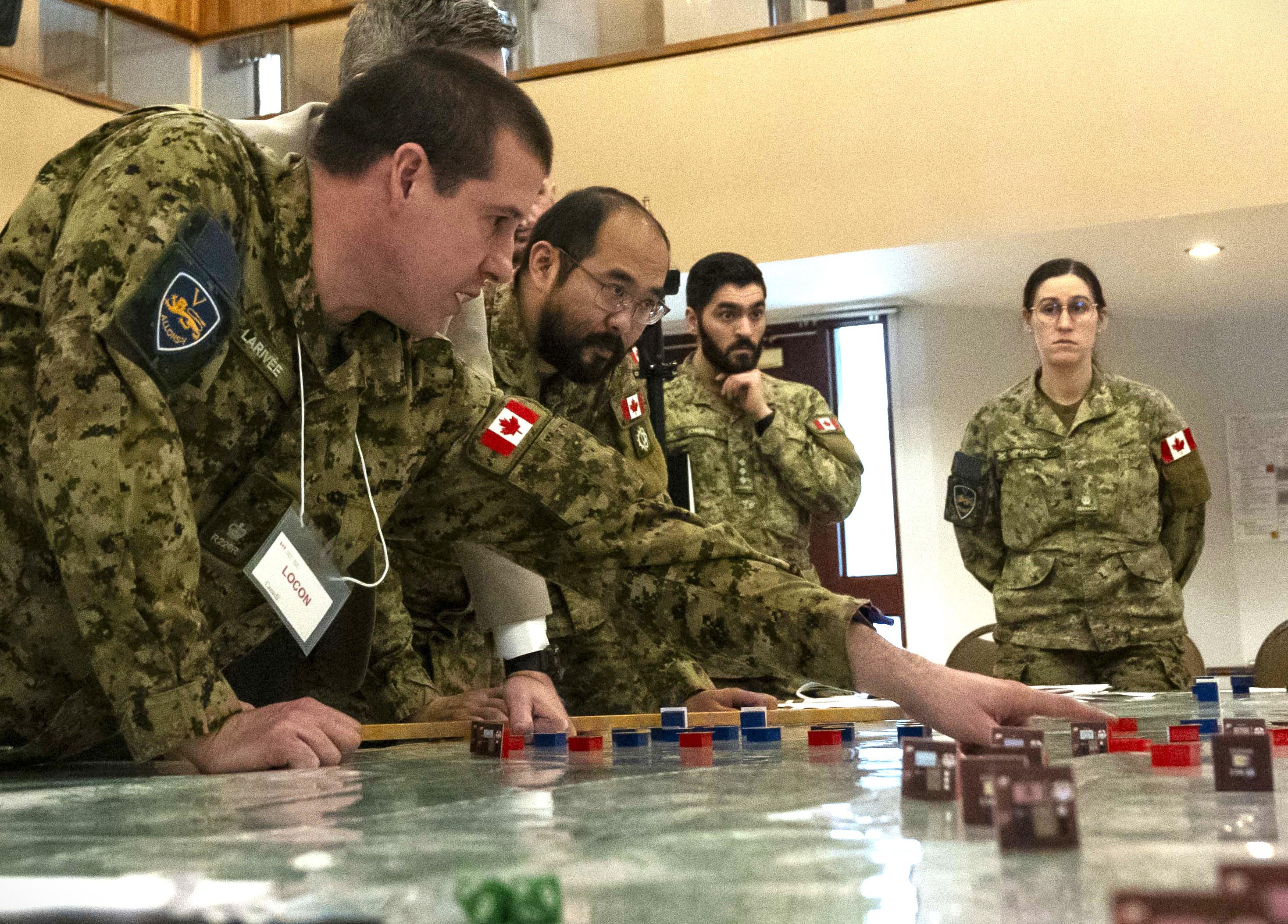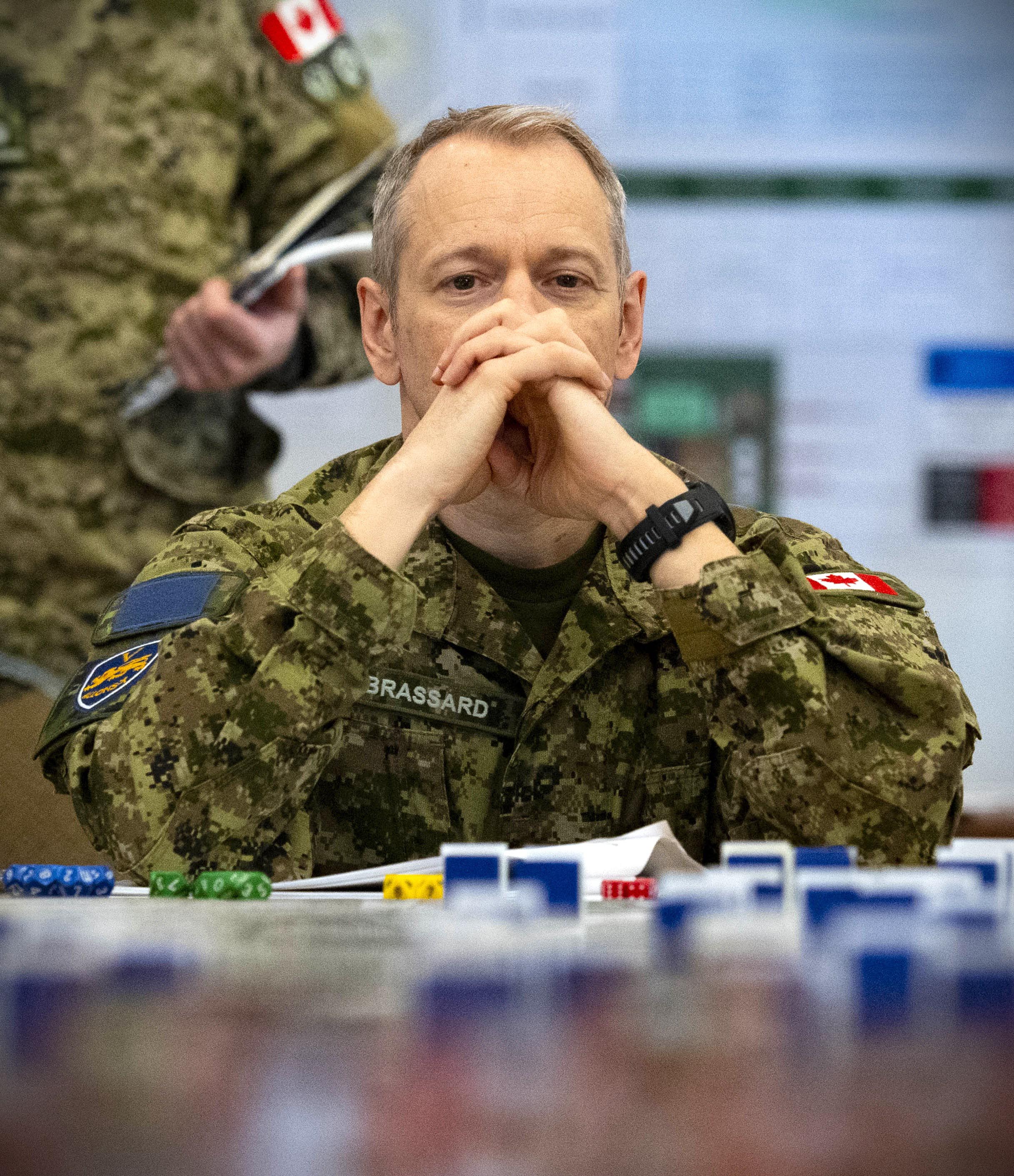Building Tomorrow’s Army: Learning from Wargame Simulations
Article / July 14, 2025 / National Defence
Source: Army Modernization Team and Directorate Army Public Affairs
In a simulated battle set in the year 2027, a Canadian Army brigade is overwhelmed by a powerful opponent in a fictional Baltic region. Over several hours, the brigade has suffered heavy losses and had to call the NATO division for support. Casualties are high, morale is low.
Thankfully, this is not a real war, but a wargame, a kind of military exercise designed to test ideas and expose weaknesses.
Watching the action unfold from the Officers’ Mess in Valcartier, Colonel Marc O’Ray, the inaugural leader of the Army Modernization Team (AMT), is not surprised: “This outcome just shows how urgently we need to modernize our army, adjust its structure, and rethink how we fight.”
Urgency and focus
Part of a broader effort to transform the Canadian Army, the exercise served as a proof of purpose. The goal was to understand where today’s forces fall short, and what needs to change to meet future challenges. The results confirmed the need for stronger organizational structures, better digital communication systems, more flexible firepower, and units prepared for large-scale, high-intensity combat. The work of the AMT focuses on six key areas: how the Army lives, trains, operates, fights, mobilizes, and manages change. The Valcartier wargame focused on how the Army fights.
Testing with real-world scenarios
The scenarios, developed by the AMT with support from the Canadian Army Land Warfare Centre and the Canadian Joint Warfare Centre, tested how a 2027 Canadian brigade would perform against a well-equipped enemy. That performance was then compared to a more advanced version of the brigade involved in large-scale combat operations in 2033. The fictional battlefield included open terrain, forests, towns, rivers, and roads—challenging both sides to adapt, manoeuvre, deter or strike creatively.
A new approach to war simulations
Unlike past exercises, this wargame was designed by the Army, for the Army—and it broke from tradition in several ways. It did not wait for the next five-year cycle and, most notably, it was not classified. That meant more people could participate, observe, and learn from it. Too often, lessons from classified exercises stay locked away. This time, the Army wanted to share what it learned.
Instead of using expensive computer simulations, the wargame relied on real soldiers and experienced observers to play out the scenario. “We are fighting a thinking enemy, real people, not just numbers,” explained Major Halos, a member of the Canadian Army Land Warfare Centre. The two opponents commanded infantry brigades equipped with tanks, artillery, drones, and electronic warfare capabilities. Observers tracked both quantitative data—like weapon ranges and hit rates—and qualitative observations such as shortfalls in training, doctrine, and readiness.
Change requires training
One of the biggest takeaways? New equipment alone isn’t enough. In the 2033 scenario, players struggled at first to use unfamiliar tools effectively. Without proper training and updated tactics, even the most advanced systems can be misused or ignored. But as the game progressed, players adapted. They learned how to manage electronic signals, counter enemy drones, and coordinate attacks more effectively. This showed just how important training is to real transformation.
Implementing and sharing lessons learned
After the exercise, participants pitched their ideas for improvements in a “Dragon’s Den”-style session, where senior leaders listened and gave feedback. This rapid exchange of ideas helped turn battlefield insights into real modernization plans.
To spread the lessons further, officers from across the brigade were invited to observe the final round. They then broke into smaller groups to discuss what they saw and how it applied to their own roles. This peer-to-peer learning helped make the lessons more personal and practical.
The Army also shared the scenario materials with other units so they could run their own versions of the exercise. The goal is to make this kind of training a regular habit—not just a one-time event.
The clock is ticking
The good news? By 2033, the simulated Canadian brigade was far more capable than its 2027 version. The bad news? Waiting until 2033 might be too late. This wargame was not just a simulation—it was a warning. If the Army doesn’t move faster to modernize, produce new equipment, and shift from a peacetime mindset to a warfighting one, it risks being unprepared when it matters most. The time to act is now—while the lessons are fresh, the momentum is strong, and the next real conflict is still just a possibility.
Caption
Catch a glimpse of the Valcartier Wargame in action – click to view




